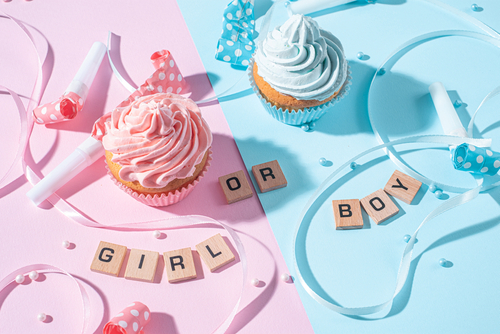Are Gender-Reveal Parties Harmful to Trans and Non-Binary People?

Since the late 2000s, gender-reveal parties have increased in popularity. An expecting couple and their loved ones typically host these prenatal gatherings. At the celebration, the couple reveals what the sex of their unborn child will be. Typically, the revelation is made through a mechanism such as a frosted cake cut to reveal a blue or pink interior, for a boy or girl respectively. With the rise of social media, viral videos and virtual meetings, these parties have not only gotten more popular, but the mechanisms for reveal have become more grandiose and even dangerous in some cases.
Over the past few years, transgender and non-binary persons have become more visible in the public eye. The people in these communities do not identify as the sex they were assigned at birth. Many in these groups face discrimination and danger due to their identities. With the spread of gender-reveal parties and society’s evolving understanding of gender identity, are these get-togethers harmful to those who are transgender, gender-nonconforming and non-binary?
What Are Gender-Reveal Parties?
Gender-reveal parties are distinct from baby showers, which are also prenatal celebrations. Baby showers are parties where someone who is expecting is showered with gifts for a future infant. A gender-reveal often uses the colors pink and blue to reveal an unborn child’s sex in advance. Whereas showers tended to involve the expecting mother and adult female loved ones, reveal events usually involve friends and family of all genders and ages.
These gatherings reinforce gender stereotypes, as themes are presented as a binary between masculine and feminine. For example, a theme might be “rifles and ruffles,” with the implication of guns being masculine and ruffles as feminine. Usually, a third party, such as a close friend or family member, is entrusted with information about the sex. They will keep it a secret from the expecting parents and everyone else. Attendees are often encouraged through games and other activities to share their guesses on the sex. Finally, at the end of the party, the couple reveals the sex of their fetus.
These parties emerged in the late 2000s, with early YouTube videos dating back to 2008 and 2009. One of the earliest high-profile reveals involved popular blogger Jenna Karvunidis. She shared the sex of her fetus using a cake. In the 2010s, more people held these celebrations, striving for more creative ways to announce the sex of their child-to-be. In late 2020, a pyrotechnic device used at a gender-reveal party sparked the El Dorado Fire. This wildfire claimed one life, injured 12 people, burned over 22,700 acres and destroyed or damaged 16 buildings!
What’s the Problem?
One fundamental issue with these festivities is a failure to distinguish between sex and gender. One’s genitals does not determine their gender identity. Gender is a social construct whereas sex is about one’s body parts. Calling these gatherings gender-reveals is a misnomer, as they only reveal sex.
Gender-reveals also reinforce the notion of a binary in that one can only be male or female, which not only erases transgender and nonbinary people but those who are intersex also. These parties also reinforce gender essentialism, the idea that there are distinct biological and psychological qualities particular to men and women. Blogger Karvunidis would later express regret about starting the trend, not only due to the danger of some stunts, but also because her child is gender-nonconforming.
One of the joys of pregnancy for many is anticipation of the life that is to be. Technology has made it possible to know a child’s sex before birth, and so-called gender-reveal parties provide an opportunity for those who are closest to celebrate. As we come to understand gender identity, we must recognize that these celebrations do not actually reveal gender, but sex. They also reinforce concepts that can be especially harmful to people who are transgender, nonbinary or genderfluid.














